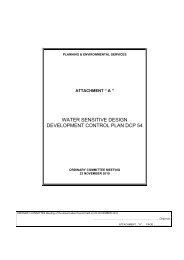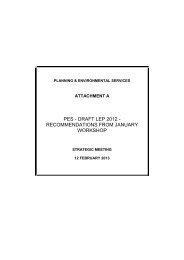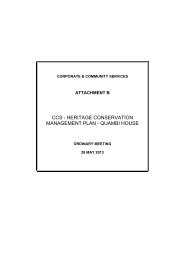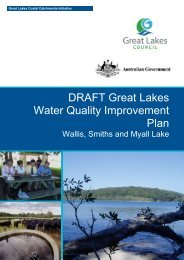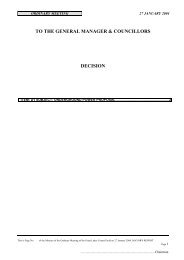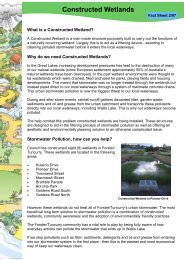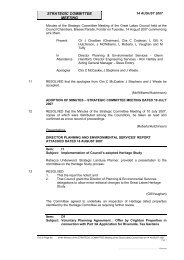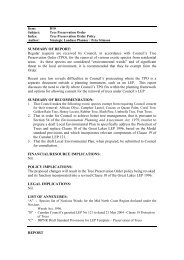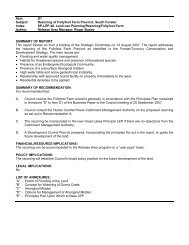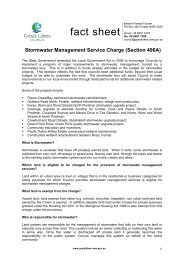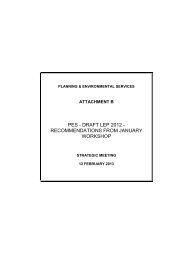13.2 The Wallis Lake Estuary Management Committee - Great Lakes ...
13.2 The Wallis Lake Estuary Management Committee - Great Lakes ...
13.2 The Wallis Lake Estuary Management Committee - Great Lakes ...
You also want an ePaper? Increase the reach of your titles
YUMPU automatically turns print PDFs into web optimized ePapers that Google loves.
<strong>Wallis</strong> <strong>Lake</strong> <strong>Estuary</strong> <strong>Management</strong> Plan<br />
DETERMINATION OF CONSEQUENCE<br />
1 Catastrophic Human death and/or huge financial loss and/or irreversible environmental/social/cultural damage or<br />
loss<br />
2 Major Serious human injury and/or major financial loss and/or significant environmental/social/cultural<br />
damage or loss<br />
3 Moderate Human medical treatment required and/or huge financial loss and/or serious<br />
environmental/social/cultural damage or loss<br />
4 Minor Medium financial loss and/or moderate environmental/social/cultural damage or loss<br />
5 Insignificant Low financial loss and/or some environmental/social/cultural damage or loss<br />
[Table 3.2: Determination of consequence for priority assessment ranking scheme]<br />
This ranking scheme allows highest priority to be given to strategies relating to issues where the<br />
current situation is irreversibly threatening the health of the <strong>Lake</strong> system over large spatial and<br />
temporal scales and/or has the potential to cause human death. In this case management<br />
measures will bring immediate relief to the environment and benefit the community.<br />
Strategies with the immediate priority rank should be commenced within 1 year of adoption of the<br />
WLEMP to prevent further degradation/conflict or irreversible damage, high priority strategies<br />
should be implemented with the next 2-3 years and medium priority actions should be implemented<br />
within the next 5 years. Long-term priority has been given to strategies that will need to be<br />
implemented to address issues in the near future, but higher ranked items should take precedence.<br />
Specific time frames are deliberately omitted for each action; instead it is thought it to be inherent<br />
in the designated priority rank. This avoids precluding implementation of lesser-ranked actions if<br />
the opportunity arises and resources are available.<br />
3.3 Indicative costs<br />
Where possible, an approximate budget based on information currently available is presented for<br />
implementing each action. <strong>The</strong> values given for new major works will need reviewing when a<br />
detailed work program is developed. It is likely that the actual cost of implementing the WLEMP will<br />
be higher than that stated due to unforseen maintenance costs etc. Actions that require staff time<br />
only are indicated.<br />
3.4 Performance assessment<br />
Section 6 details how the management actions can be monitored, assessed and reviewed where<br />
necessary. An integrated assessment program is presented identifying the performance indicators<br />
and data interpretation methodology. Results of the monitoring and evaluation program must feed<br />
back into the review of the WLEMP in 5 years time.<br />
21




